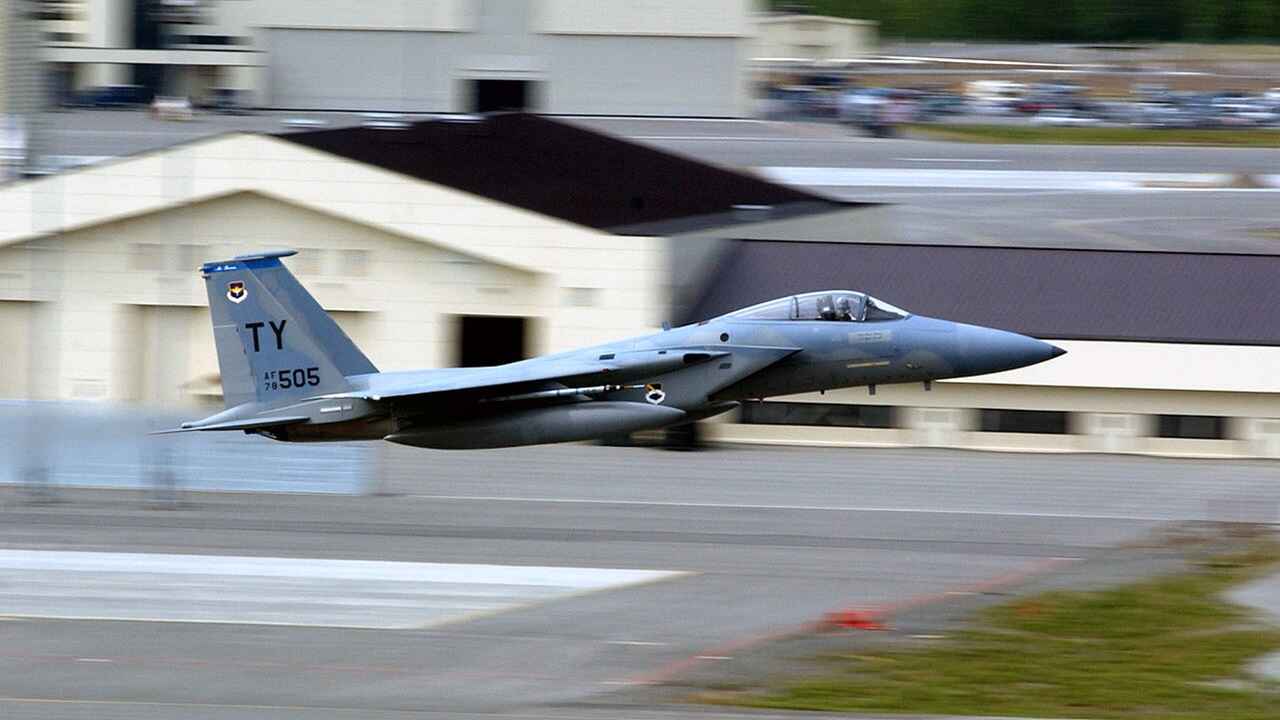
More Upgrades for the F-15 Eagle Are on the Way
The F-15EX Eagle II is the most advanced version of the F-15 platform and is quickly outpacing its older “siblings.”
One of the most formidable fighter jets in the U.S. Air Force’s arsenal just got a key upgrade.
In the middle of January, the Air Force received its first F-15E Strike Eagle fighter jets equipped with the Eagle Passive/Active Warning and Survivability System (EPAWSS) electronic warfare suite.
Two aircraft equipped with a powerful electronic warfare system arrived at RAF Lakenheath, the Air Force’s main base in the United Kingdom.
A New Electronic Warfare Package
“Having EPAWSS operational at RAF Lakenheath significantly enhances our ability to detect and counter threats, ensuring the safety and effectiveness of our crews,” Air Force Lt. Col. Timothy Causey, the commanding officer of the 494th Fighter Squadron, said in a press release.
The upgraded F-15E Strike Eagle aircraft add to America’s, and NATO’s, deterrence capabilities against Russia.
The EPAWSS offers the pilot better situational awareness by autonomously detecting, identifying, and locating incoming threats and dealing with them.
“This advanced electronic warfare system, when combined with the F-35s, acts as a powerful force multiplier, transforming our operations and amplifying the 48th Fighter Wing’s impact in the battlespace,” the Air Force officer added.
The EPAWSS upgrade is part of a wider effort by the Air Force to modernize its F-15E Strike Eagle fleet and ensure that it remains competitive in a potential conflict with a near-peer adversary like China or Russia.
“The delivery of these upgraded F-15E Strike Eagles represents a major milestone in the Air Force’s ongoing efforts to modernize its fourth-generation fleet,” the Air Force stated in a press release. “By equipping these aircraft with advanced electronic warfare capabilities, the 48th FW is ensuring their readiness for operations in austere environments and supporting NATO’s missions across Europe and the Pacific.”
The F-15EX Eagle II is the most advanced version of the F-15 platform and is quickly outpacing its older “siblings.” The Air Force has more than 200 F-15E Strike Eagles in service.
“The EPAWSS upgrade is designed to enhance the F-15E’s radar warning, geolocation, situational awareness and self-defense capabilities, enabling the fighters to survive and operate in highly contested environments,” the Air Force added.
Electronic Warfare
You might hear electronic warfare and think about attacking the computer systems of an adversary with malware. This would be considered cyber warfare. Rather, electronic warfare concerns the electromagnetic spectrum on the battlefield. Think radios, unmanned aerial systems, radar, et cetera. By using electromagnetic energy to control the electromagnetic spectrum, a military commands the tempo of the fighting.
In an air power setting, militaries harness the electromagnetic spectrum to suppress or disable adversary radars, thus paving the way for more effective air strikes. For example, F-15E equipped with the EPAWSS upgrade or EG-18 Growler (the Navy’s dedicated electronic warfare fighter jet) will go in first and target adversary radars. If they are successful, other fighter jets, bombers, transports, and support aircraft will operate more freely over the battlefield.
As the fighting in Ukraine shows on a daily basis, electronic warfare is an essential part of modern warfighting. The side that can control the electromagnetic spectrum can control the fight and prevail.
About the Author: Stavros Atlamazoglou
Stavros Atlamazoglou is a seasoned defense journalist specializing in special operations and a Hellenic Army veteran (national service with the 575th Marine Battalion and Army HQ). He holds a BA from the Johns Hopkins University and an MA from the Johns Hopkins’ School of Advanced International Studies (SAIS). His work has been featured in Business Insider, Sandboxx, and SOFREP.
Image: Wikimedia Commons.